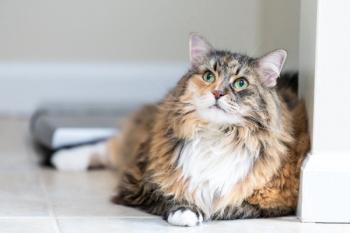
Today's Daily Dose: Vaginal cytology
What can this test tell you about the cause of vulvar discharge?
Untitled Document
“As a general rule, mucoid discharge is associated with vaginitis; mucopurulent to purulent discharge is associated with vaginitis, metritis (postpartum), pyometra (during or after diestrus) or uterine stump pyometra, and, occasionally, brucellosis; and hemorrhagic discharge is associated with the subinvolution of placental sites (postpartum), neoplasia of the genitourinary tract, coagulopathy, the presence of blood parasites (ehrlichiosis or babesiosis), or physiologic estrus (vaginal epithelial cells cornified).”
-Margaret V. Root Kustritz, DVM, PhD, DACT
From
Newsletter
From exam room tips to practice management insights, get trusted veterinary news delivered straight to your inbox—subscribe to dvm360.




